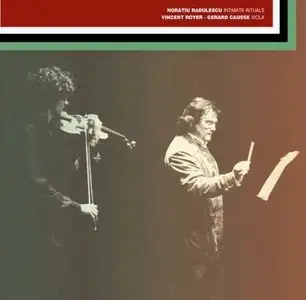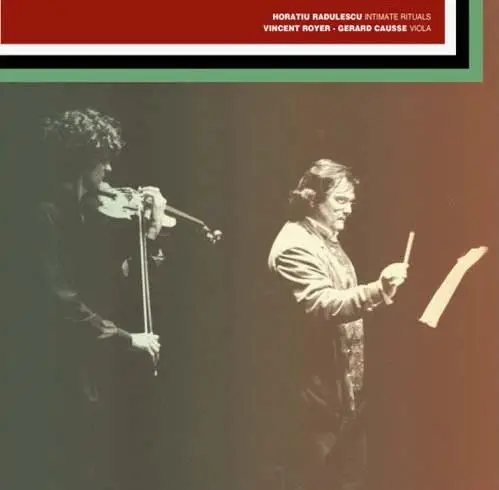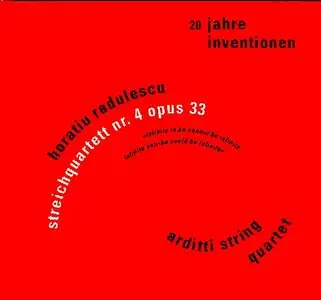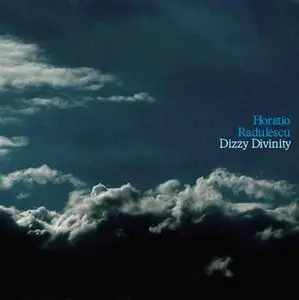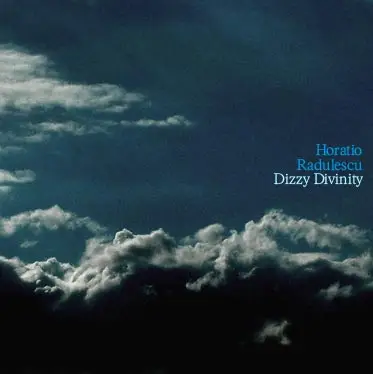Horaţiu Rădulescu: Intimate Rituals, String Quartet No. 4, and Dizzy Divinity
Avant-Garde | MP3 256 kbps, 192 kbps | 73 MB / 92 MB / 143 MB
Gerard Causse, viola; Vincent Royer, viola; Pierre-Yves Artaud, flute; Orchestre Français de Flutes – Horaţiu Rădulescu; Arditti Quartet
If anything can be proven by listening to these Cds, it is that Rădulescu's music defies categorization. His music eludes what has unfortunately become the didactic and academic Spectralism that has taken a stranglehold in Parisian intellectual circles these days; instead he has developed massive textural sonorities – not reminescent of Ligeti or Xenakis – that recall Byzantine and Hindu music, or music he believes to be ancient and closer to the original harmonic overtone spectrum.
Horaţiu Rădulescu: Intimate Rituals
Avant-Garde | MP3 192 kbps | 73 MB
Vincent Royer, viola; Gerard Causse, viola
In his short chamber works, particularly in his cutting-edge pieces for viola, Horatiu Radulescu has been able to demonstrate his extended instrumental techniques and advanced theories of spectral music most clearly and effectively without resorting to the overwhelming wall of noise of his String Quartet No. 4 or the dense textures of his larger ensemble pieces. In most cases, one instrument is sufficient to produce the complex harmonics and microtonal swarms that vibrate, twitter, and shimmer on this 2006 release from Sub Rosa; such intricate solo explorations as Das Andere for viola, Op. 49 (1984, translated as Alter Ego), and Lux Animae II for viola, Op. 97â (1996-2000) are among the most economical of his highly ornate and intensely busy studies. On the occasions when one instrument is not enough, as in the Agnus Dei for two violas, Op. 84 (1991), and Intimate Rituals XI for scordatura viola and sound icon, Op. 63ø (2003), the effect of the additional parts is like an extension of one sonic entity, not of a duet or single line instrument with accompaniment. Radulescu's work usually sounds like a flurry of notes that are difficult to sort out and must be taken as a mass of indeterminate pitches and upper partials that are meant to flutter and resonate as an aggregate. But in spite of the extreme complexity and sometimes harsh sonorities, what gives Radulescu's music its appeal is the exotic color that overtakes all the noises and makes them sound otherworldly and sometimes quite magical. Few pieces are as hypnotic as Intimate Rituals, with its taped drones and resonant plucking (on Radulescu's "sound icon," a grand piano turned on its side and tuned to unisons with various string tensions), and the squealing of the literally high-strung viola turns mysteriously into an ethereal aria from beyond the stratosphere. The performances by violists Vincent Royer and Gerard Causse, with Petra Junken and the composer playing the sound icon, are bold and uncompromising, and this album is recommended for adventurous listeners who like their music fierce and fearless.
– Blair Sanderson, All Music Guide
1) Das Andere ('Alter ego') for viola, Op. 49 (1984)
2) Agnus Dei for two violas, Op. 84 (1991)
3) Lux Animae II for viola, Op. 97a (1996-2000)
4) Intimate Rituals XI for scordatura viola and sound icon, Op. 63ø (2003)
Tracks 1 and 3: Vincent Royer, viola
Track 2: Vincent Royer, viola; Gerard Causse, viola
Track 4: Vincent Royer, viola; Gerard Causse, sound icon (a grand piano on its side with the strings free to resonate, then struck with gold coins)
Horatiu Radulescu's String Quartet No. 4, Op. 33, is, at least nominally, chamber music for two violinists, a violist, and a cellist, though the parts are multiplied through computer generation to sound as if there were eight virtual quartets and a ninth quartet playing in real time. Listeners may feel, however, that this electronically manipulated, densely layered work – played to stunning effect by the phenomenal Arditti String Quartet on this 2003 release from Edition RZ – is better classified as electro-acoustic music, or less charitably, as an experiment in noise; but it should be regarded in any case as something other than a string quartet in the traditional sense. Indeed, there are so few points in common between the conventions of string quartet writing and this challenging study of music and perception that one can legitimately question the use of the usual terminology for this sprawling, cosmic sound-sculpture. In his 49-minute examination of sonority, memory, and time, Radulescu certainly goes far beyond the expectations of classical developmental forms, and even transcends what is familiar of modernist methods and extended techniques. Instead, Radulescu approaches composition philosophically; he uses the medium to explore abstract concepts, rather than to develop particular musical ideas or express emotions. Through the use of unequal scales, ratios of durations to densities, and gradual alterations of rhythms and textures over long, slowly evolving sections, Radulescu produces music that matches anything by composers of the spectral school in mathematical complexity and microtonal variety; yet because of the quartet's implied "program," this is also music to think about. When Radulescu appends two enigmatic phrases as a subtitle – "infinite to be cannot be infinite, infinite anti-be could be infinite" – he presents a formula that apparently plays off ideas of Lao Tzu and Sartre. Yet it is unlikely many listeners will grasp this conundrum while absorbing the music, and it is perhaps asking too much of them to understand how it pertains, except perhaps in the most esoteric or suggestive ways. The String Quartet No. 4 is enthralling and sometimes daunting music that adventurous listeners will find utterly mesmerizing, but having a degree in existential philosophy is not required to appreciate this piece. The recording is quite variable in quality, though how much of that is due to the composer's intentions or to the hazards of performance is debatable.
Blair Sanderson, All Music Guide
1) Streichquartett Nr 4 opus 33, “infinite to be cannot be infinite, infinite anti-be could be infinite”
Performed by the Arditti Quartet
Horaţiu Rădulescu: Dizzy Divinity
Avant-Garde | MP3 256 kbps | 143 MB
Pierre-Yves Artaud, flute; Orchestre Français de Flutes, conducted by Horaţiu Rădulescu
I find that the works contained on the CD titled Dizzy Divinity really give credence to Rădulescu's formative ethos: that spectralism – or music that meditates upon the harmonic overtone series – induces mystical fervor in the listener and the player. Ian Pace, the British pianist who champions many modern composers, wrote of Rădulescu: "A fantastic composer of passionate, hallucinatory music, and of vital importance in the history of spectral music." The work Dizzy Divinity itself is a vertiginous piece for solo flute; the work Byzantine Prayer, also included on this CD, is 40 flautists playing 72 flutes. Rădulescu's incredible usage of unusual resources is on constant display in this dazzling CD.
1) Dizzy Divinity, for solo flute
2) Byzantine Prayer
3) Frenetico il longing di amare
4) Capricorn's Nostalgic Crickets II
Track 1: Pierre-Yves Artaud, flute
Tracks 2 through 4: Orchestre Français de Flutes, conducted by Horaţiu Rădulescu
I've got thank Zhao from differentwaters (http://differentwaters.blogspot.com/) for the above CD.
ENJOY




